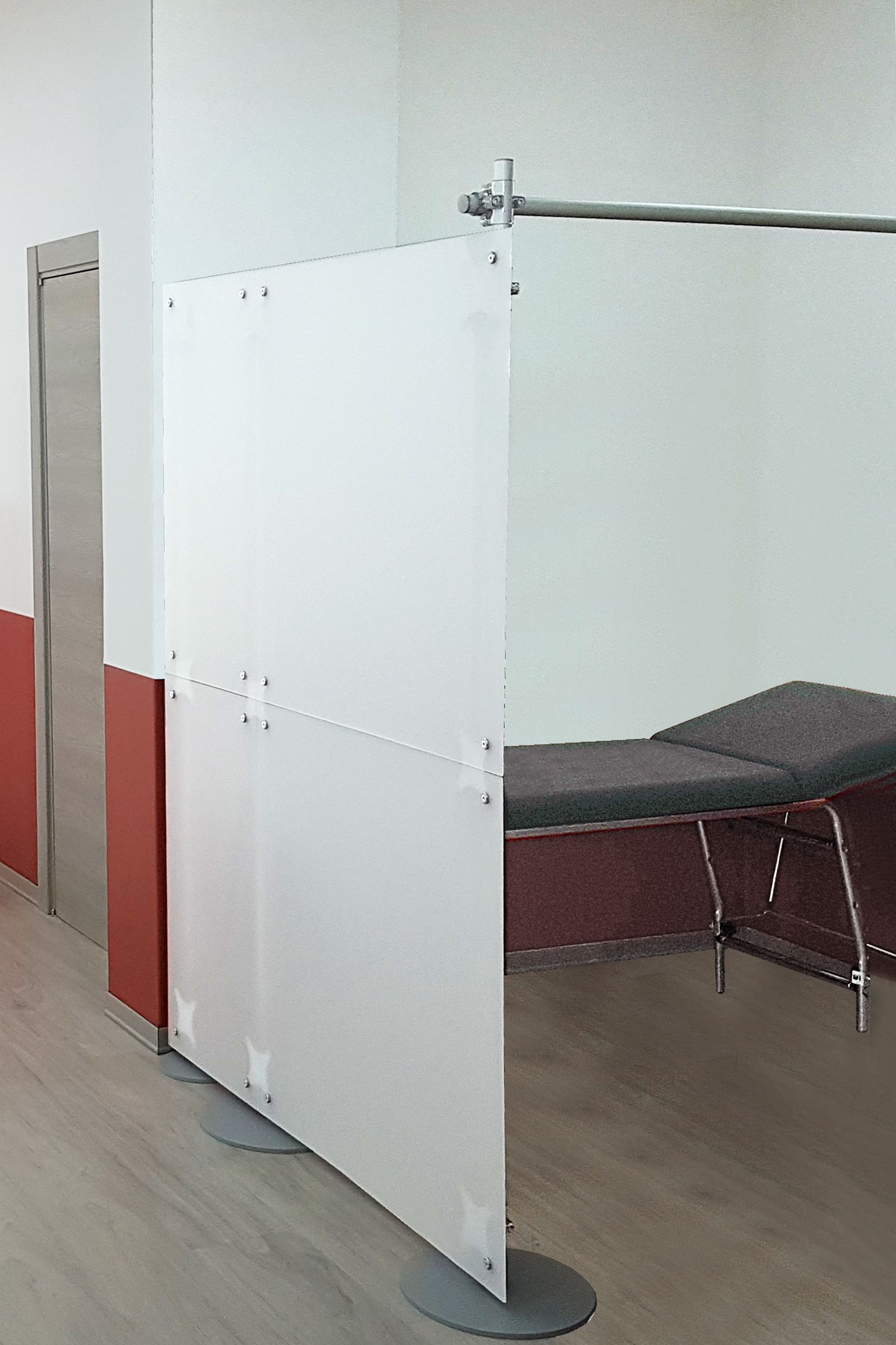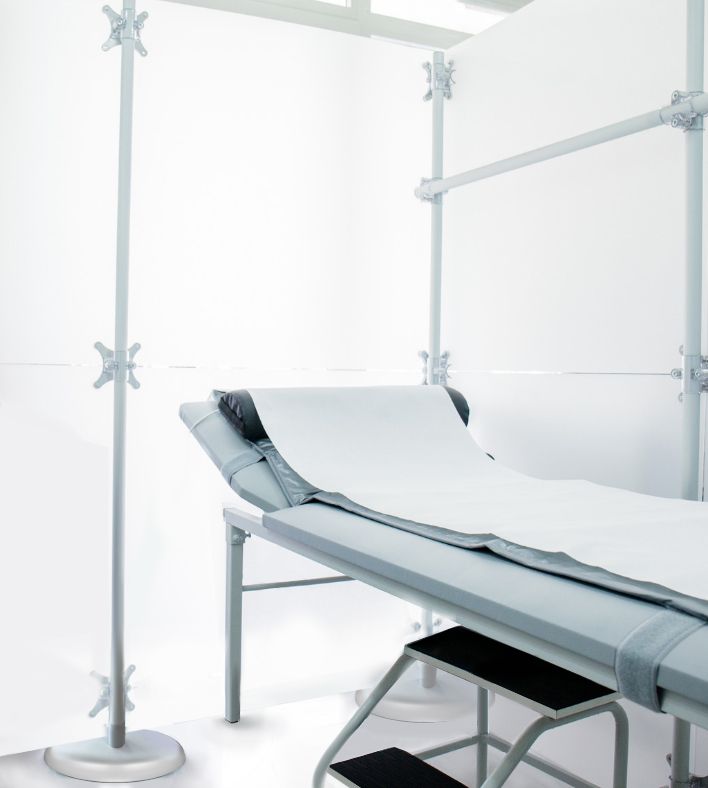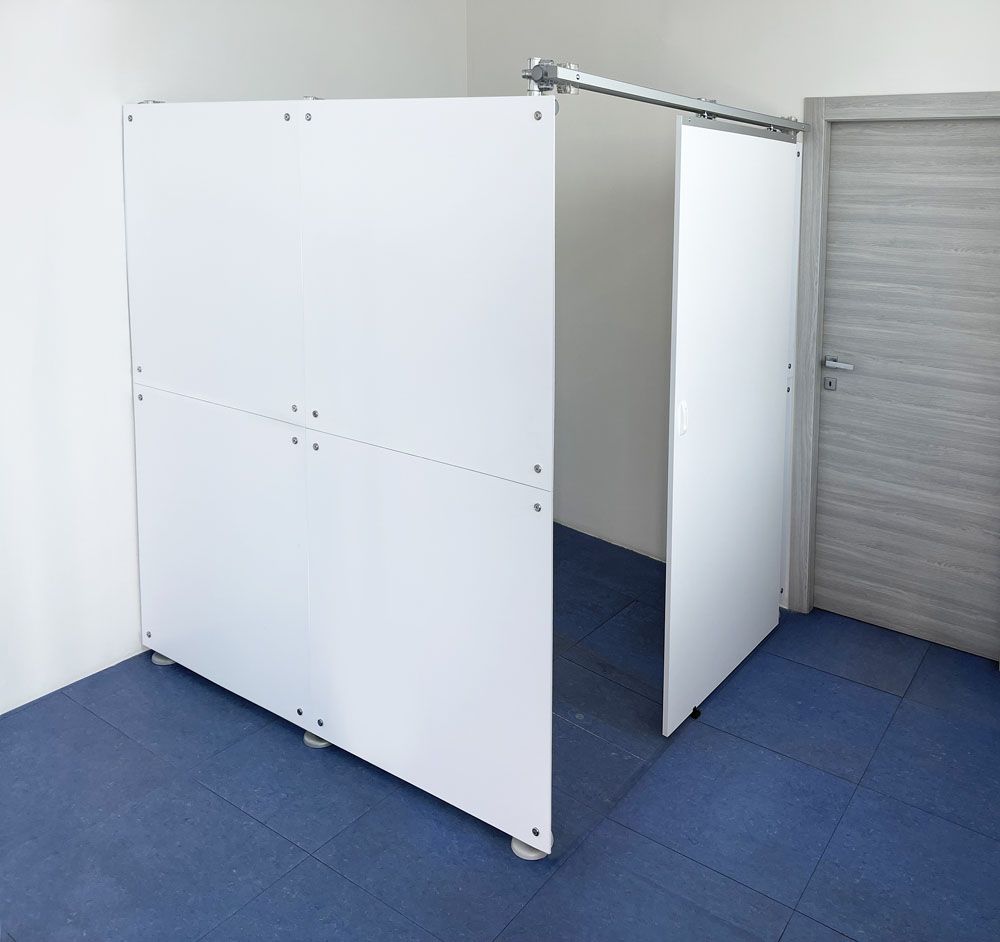PRODUCT CATEGORIES:
CABIN
FURNISHING SOLUTIONS
SOLUTIONS FOR:
CASE STUDY:
DOWNLOAD:
PHYSIOTHERAPY STUDIES AND REHABILITATION CENTERS
THE CABINS TO CREATE STATIONS FOR PHYSIOTHERAPY TREATMENTS AND MASSAGE CABINS
Physiotherapy is a health discipline that deals with the rehabilitation and recovery of a person's physical function through the use of therapeutic exercises, manipulations, mobilization techniques, electrotherapy and other non-pharmacological therapies.
Rehabilitation centers are healthcare facilities that specialize in the physical rehabilitation and care of patients who have suffered an injury or illness that has limited their ability to move or caused chronic pain. These centers are staffed by qualified healthcare professionals, including physiotherapists, osteopaths, orthopaedists and other specialists.
Cabins are often used in rehabilitation centers as workstations for physiotherapy. A rehabilitation booth is a facility that allows a physical therapist to work on a patient in an isolated and private manner. The cabin can be used for manual therapy, movement therapy, electrotherapy and other specific therapies.
The rehabilitation cabins are equipped with special equipment, such as massage tables, vibration plates, exercise machines, electrostimulators, shock waves and other advanced technologies. This equipment can be used to help patients regain strength, flexibility and range of motion, as well as relieve pain.
Rehab booths are an important component of such centers, providing physical therapists with a private and secluded space to work with patients and providing them with the necessary equipment to help patients regain their strength, flexibility and mobility.
The cabins used in physiotherapy and rehabilitation centers are designed to provide a comfortable and safe environment for patients during their therapy. Usually they are individual cabins, equipped with a series of specific equipment for physiotherapy and rehabilitation.
Cabinets can vary in size depending on the type of equipment they contain and the needs of the patient. Some cabins may be relatively small, suitable for stretching or limited mobility exercises, while other cabins may be larger and accommodate larger equipment such as treadmills or stationary bikes for aerobic exercise.
The cabins are also designed to ensure patient privacy during therapy and to allow the physiotherapist to closely monitor the patient during the session. Some booths may be equipped with mirrors to allow patients to check their posture and form as they exercise.
In addition, many cabins are equipped with equipment for monitoring patient vitals, such as heart rate, blood pressure and oxygen saturation. This allows the physiotherapist to closely monitor the patient during the session and to make any adjustments to the therapy if necessary.
The cabins used in physiotherapy and rehabilitation centers are designed to provide a safe and comfortable environment for patients during their therapy, while offering the necessary equipment to carry out targeted rehabilitation exercises and monitor the patient's progress.
Paxton Srl C.F. e P. IVA: IT01142870334
All our products are designed and manufactured in Italy
All our products are entirely conceived, designed and manufactured in Italy
CONTACTS
Operational headquarters:
Via delle Industrie, 2
26862 Guardamiglio (LODI)
Milan - Lombardy - Italy
WHERE WE ARE
Tel +39.0377.506607
email: info@paxton.it
All rights reserved | privacy policy








